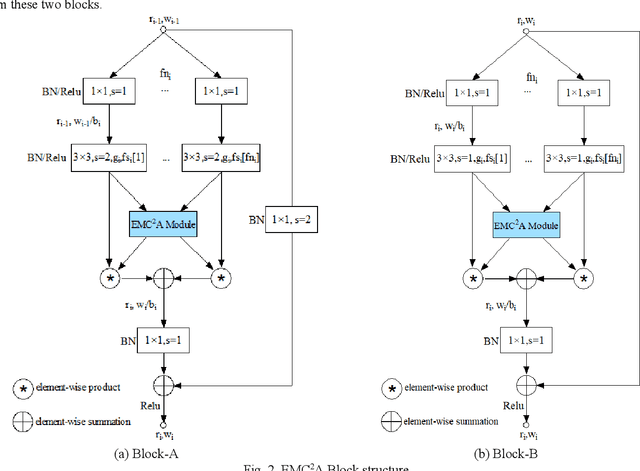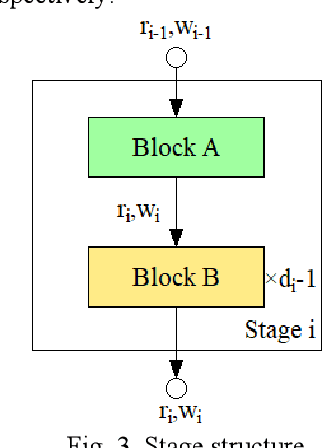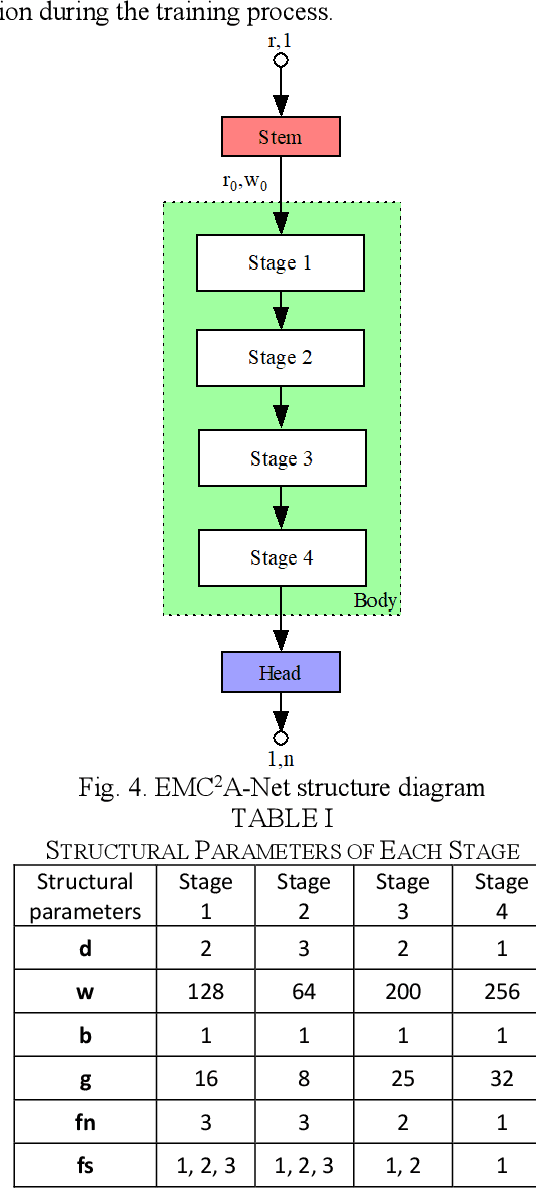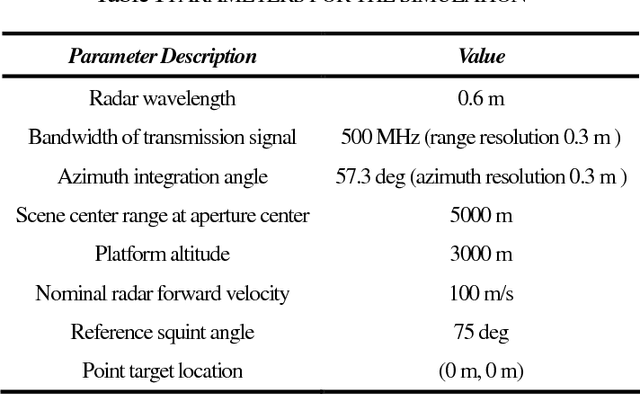Daiyin Zhu
EMC2A-Net: An Efficient Multibranch Cross-channel Attention Network for SAR Target Classification
Aug 03, 2022



Abstract:In recent years, convolutional neural networks (CNNs) have shown great potential in synthetic aperture radar (SAR) target recognition. SAR images have a strong sense of granularity and have different scales of texture features, such as speckle noise, target dominant scatterers and target contours, which are rarely considered in the traditional CNN model. This paper proposed two residual blocks, namely EMC2A blocks with multiscale receptive fields(RFs), based on a multibranch structure and then designed an efficient isotopic architecture deep CNN (DCNN), EMC2A-Net. EMC2A blocks utilize parallel dilated convolution with different dilation rates, which can effectively capture multiscale context features without significantly increasing the computational burden. To further improve the efficiency of multiscale feature fusion, this paper proposed a multiscale feature cross-channel attention module, namely the EMC2A module, adopting a local multiscale feature interaction strategy without dimensionality reduction. This strategy adaptively adjusts the weights of each channel through efficient one-dimensional (1D)-circular convolution and sigmoid function to guide attention at the global channel wise level. The comparative results on the MSTAR dataset show that EMC2A-Net outperforms the existing available models of the same type and has relatively lightweight network structure. The ablation experiment results show that the EMC2A module significantly improves the performance of the model by using only a few parameters and appropriate cross-channel interactions.
Autofocus Correction of Azimuth Phase Error and Residual Range Cell Migration in Spotlight SAR Polar Format Imagery
Jul 16, 2012
Abstract:Synthetic aperture radar (SAR) images are often blurred by phase perturbations induced by uncompensated sensor motion and /or unknown propagation effects caused by turbulent media. To get refocused images, autofocus proves to be useful post-processing technique applied to estimate and compensate the unknown phase errors. However, a severe drawback of the conventional autofocus algorithms is that they are only capable of removing one-dimensional azimuth phase errors (APE). As the resolution becomes finer, residual range cell migration (RCM), which makes the defocus inherently two-dimensional, becomes a new challenge. In this paper, correction of APE and residual RCM are presented in the framework of polar format algorithm (PFA). First, an insight into the underlying mathematical mechanism of polar reformatting is presented. Then based on this new formulation, the effect of polar reformatting on the uncompensated APE and residual RCM is investigated in detail. By using the derived analytical relationship between APE and residual RCM, an efficient two-dimensional (2-D) autofocus method is proposed. Experimental results indicate the effectiveness of the proposed method.
* 29 pages, 14 figures
 Add to Chrome
Add to Chrome Add to Firefox
Add to Firefox Add to Edge
Add to Edge